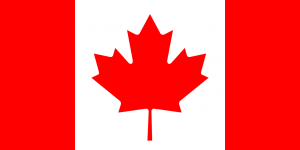Canada’s Transport Minister Marc Garneau introduced new restrictions on passion drones at the moment, in what he stated is a response to the elevated variety of drone sightings close to airports. Calling the potential of a drone collision with a passenger plane a “nightmare scenario,” Garneau outlined new guidelines which will probably be efficient instantly. Canada Transport says that the transfer is a “measure to prevent the reckless use of drones that is putting the safety of Canadians at risk.”
The new guidelines state that leisure operators are restricted from flight over 90 meters (about 295 toes); at night time; inside 75 meters (about 250 toes) of constructing, automobiles or folks; and inside 9k (about 5.6 miles) of airports and different plane services. The guidelines relate solely to leisure customers: “Operators of drones for commercial, academic or research purposes are not affected by this measure. The rules that are already in place are effective and most commercial users operate their drones in a safe manner.”
The new legislation would impose fines of up to $three,000 for infractions, and Canada Transport asks witnesses of unlawful drone use to name native legislation enforcement. Members of the Model Aeronautics Association of Canada (MAAC) flying at MAAC fields or occasions don’t fall beneath the brand new rules.
While Garneau says that the brand new guidelines mustn’t have an effect on the industrial drone trade, the transfer prompted fast response from trade advocates. The Drone Manufacturers Alliance, a company representing producers of most leisure drones produced, stated that they consider the brand new guidelines “will provide only a negligible increase in safety while sharply curtailing the ability of Canadians to explore, photograph their country, and teach their children about science and technology. ”
“These sudden regulations, imposed without input from Canada’s tens of thousands of responsible drone pilots, will hurt innovation and education without a corresponding improvement in safety,” stated Kara Calvert, Director of the Drone Manufacturers Alliance. “The overwhelming majority of Canadian drone pilots operate safely and responsibly, and they are the ones who will be hurt by far-reaching restrictions – not the tiny number of irresponsible operators who have already violated existing drone safety rules. The Drone Manufacturers Alliance expects our members’ customers to fly safely and responsibly, and our years of experience show that technology and education provide a better solution than a hastily-written ban.”
Pointing out that there has by no means been a single confirmed collision between a civilian drone and a manned plane, the Alliance assertion says that harsher rules can solely hurt drone operators whereas doing little to improve security.
 Unmanned Aerial Vehicle The latest drone news
Unmanned Aerial Vehicle The latest drone news




